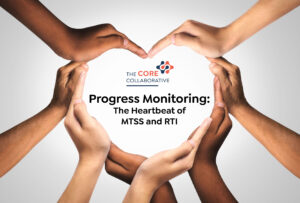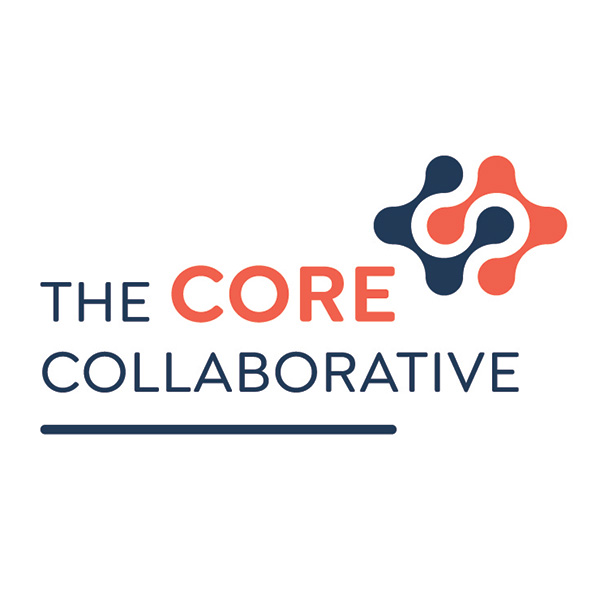In the world of k-12 education, the quest for student success is an ongoing journey. Every student is unique, and their educational needs may vary significantly. To address these diverse needs and ensure that every student reaches their full potential, educators employ Multi-Tiered System of Support (MTSS) and Response to Intervention (RTI) frameworks. One indispensable practice that supports these systems is progress monitoring – the key to tailoring interventions and maximizing student outcomes.
Understanding MTSS and RTI
Before delving into the depths of progress monitoring, let’s take a moment to understand the foundations of MTSS and RTI
- Multi-Tiered Systems of Support (MTSS): MTSS is a comprehensive, data-driven framework designed to support the academic, social, and behavioral needs of all students. It involves multiple tiers of instruction, ranging from universal, high-quality instruction for all students to targeted interventions for those who need additional help.
- Response to Intervention (RTI): RTI is a component of MTSS that focuses on academic skills. It involves a systematic process of identifying students who are struggling in their learning, providing them with target interventions, and monitoring their progress to make data-driven decisions about their instructional needs.
The Role of Progress Monitoring
Progress monitoring is the heartbeat of MTSS and RTI. It is the ongoing process of collecting and analyzing data to track a student’s response to instruction and intervention. This critical step helps educators make informed decisions about the effectiveness of their teaching methods and whether adjustments are needed. Progress monitoring is also essential for determining the efficacy of your school’s interventions.
Engaging in progress monitoring offers several key benefits:
- Early Intervention: By tracking student progress regularly, educators can identify struggling students early on and provide timely interventions. This proactive approach prevents academic difficulties from escalating.
- Personalized Learning: Progress monitoring allows educators to tailor instruction to individual student needs. No two students are the same, and progress monitoring ensures that each student receives the support they require.
- Data-Driven Decision-Making: Educators can use progress monitoring data to make informed decisions about instruction. They can adjust strategies, modify interventions, or change the level of support based on the evidence collected.
- Accountability: Progress monitoring holds educators and education systems accountable for student outcomes. It ensures that resources are allocated efficiently and that students are not left behind.
Effective Progress Monitoring Strategies for PLCs
To make progress monitoring truly effective in the context of MTSS and RTI, educators can implement the following strategies:
- Clear Goals: Establish specific, measurable SMART goals for your Impact Team-PLC and then set goals with each individual student. These goals should be aligned with Universal Screener data and curricular outcomes based on the student’s needs.
- Frequent Assessment: Regularly assess student progress using various methods, such as formative assessments, benchmark assessments, and standardized tests.
- Data Analysis: Analyze progress monitoring data systematically. Look for trends, patterns, and areas where students may need additional support.
- Collaboration: Foster collaboration among teachers, specialists, and support staff. Sharing insights and strategies can lead to more effective interventions.
- Communication: Keep parents and guardians informed about their child’s progress. This partnership can provide valuable insights and support at home.
- Adjustments: Be flexible and willing to adjust interventions as needed. If a particular strategy isn’t working, try something new.
- Documentation: Maintain detailed records of progress monitoring data. This documentation helps track changes over time and can be useful in making data-driven decisions.
Check out these resources to support your PLCs with progress monitoring:
- Evidence-Analysis-Action Template (Analysis of Student Work)
- Check-In Protocol
- Holistic Rubric Template
- Unit Stoplight Rubric

Progress Monitoring for Students
Students can play an active role in their progress monitoring, fostering a sense of ownership and responsibility for their learning. here are some ways students can effectively monitor their progress:
- Set Clear Goals: Encourage students to establish clear, achievable goals for themselves. These goals should be specific, measurable, and aligned with their learning objectives. Goals can encompass various aspects of learning, such as academic performance, skill development, or personal growth.
- Keep a Learning Journal: Suggest that students maintain a learning journal or notebook. In this journal, they can record their goals, achievements, challenges, and reflections. Regularly updating the journal helps students track their progress over time and identify areas where improvement is needed.
- Use Data and Feedback: Teach students to pay attention to feedback from teachers, peers, and self-assessments. Encourage them to use this feedback constructively to adjust their learning strategies. Help students understand and interpret assessment results, whether they’re from quizzes, tests, or assignments. Analyzing their performance can provide valuable insights.
- Set Milestones: Break down long-term goals into smaller milestones or checkpoints. This makes progress tracking more manageable and allows students to celebrate small victories along the way. Milestones provide students with a sense of accomplishment and motivation to continue working toward their larger goals.
- Self-Assessment: Teach students how to self-assess their work and progress. Encourage them to reflect on their strengths, weaknesses, and areas where they need improvement. Ask students to evaluate their performance against established criteria or rubrics periodically.
- Seek Help When Needed: Promote a growth mindset by emphasizing that seeking help is a sign of strength, not weakness. Encourage students to reach out to teachers, tutors, or peers when they encounter challenges. Offer guidance on effective communication skills when seeking assistance, such as asking specific questions and providing context.
- Use Technology: Introduce students to digital tools and apps that can aid in progress monitoring. Many educational platforms offer features like progress tracking, personalized learning paths, and data visualization. These tools can help students visualize their growth and identify areas where they need to focus their efforts. There are wonderful platforms that support self-assessment and reflection (Peardeck, Nearpod, Floop, Sown to Grow).
- Reflect and Adjust: Encourage students to regularly reflect on their learning experiences. What strategies are working well, and what needs improvement? Based on their reflections, help students adjust their study techniques, time management, and goal-setting methods as necessary.
- Stay Organized: Stress the importance of staying organized with assignments, deadlines, and study materials. A well-organized approach can reduce stress and enhance overall productivity. Consider using planners, calendars, or digital tools to help students manage their schedules effectively.
- Celebrate Achievements: Celebrate both small and large achievements. Recognizing accomplishments can boost students’ motivation and self-confidence. Encourage them to reward themselves for meeting their goals, whether it’s a small treat or a special activity they enjoy.
Check out these resources to engage your students in progress monitoring:
- Floop and Sown to Grow are wonderful platforms that support students in self-assessment, reflection, and goal setting.
- Learn more with our Impact Team Goal Setting Playlist.
- Check out these goal setting docs for student goal setting – iReady, NWEA MAP, STAR.
- Download a copy of our TAG asset-based peer feedback protocol.
- Cultivate a more growth minded classroom with Growth Zones.
- We love these goal setting templates from NWEA.
- Pull from 87 self-reflection questions for introspection.
By actively participating in their progress monitoring process, students can become more self-aware, resilient, and motivated learners. These skills are not only valuable during their educational journey but as they continue to set and pursue goals throughout their lives.
Paving the Way for a Brighter Future
Progress monitoring is the compass that guides educators on the path to student success within the MTSS and RTI frameworks. By diligently collecting, analyzing, and using data, educators can ensure that every student receives the support they need to reach their full potential.
Progress monitoring is an invaluable practice as we continue to navigate the complex landscape of teaching and learning. It empowers educators to make evidence-based decisions, foster collaboration, and, most importantly, provide each student with a personalized educational journey toward success. With progress monitoring as our guide, we can pave the way for brighter futures for all students, regardless of their unique learning needs.


